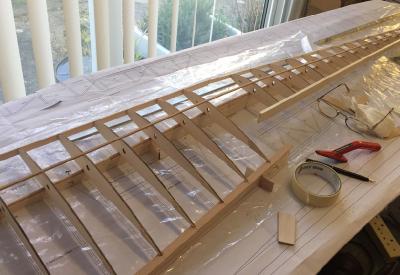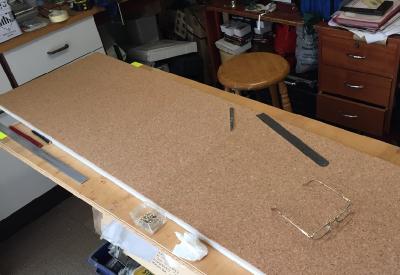|
Slingsby Petrel Project Diary - part 1
After building the Wolf, I found myself drawn by the prospect of a slightly larger vintage glider. I'd seen the prototype of this particular model and, as well as looking very beautiful to my eye, it performed very well off an aerotow. At 1/5 scale, it is easier to transport than the larger scale gliders but still large enough to have a good presence in the air so, as with the Wolf, a couple of us in the local flying club managed to talk each other into giving it a go. This time though, it was going to be a proper Winter build so, although the design was published as a free plan in the July 2019 edition of RCM&E, to reduce the amount of dust generated I opted to start with the part kit supplied by Laser Cut Sailplanes. With this in hand, a supplementary wood list was drawn up, together with a shopping list for servos, tow release etc. and a canopy from Sarik Hobbies. The parts kit came with another version of the plan which is much easier to work with than the sliced and diced, double sided magazine version. Unfolding this plan though brought home just how long the wings are, even on a 1/5 scale glider! Furthermore, since each wing is to be built in one piece regardless of the gull anhedral bend, the first job was to make a bigger building board. A piece of Contiplas left over from a previous kitchen project was cut down to size and faced with cork tiles.
The board rests on my existing central table (actually an original B&D dual height Workmate) so, by pushing it one way or the other I can (just!) get around to work from either side. |
||
|
||||||||||||||||||||||||||||||||||||

